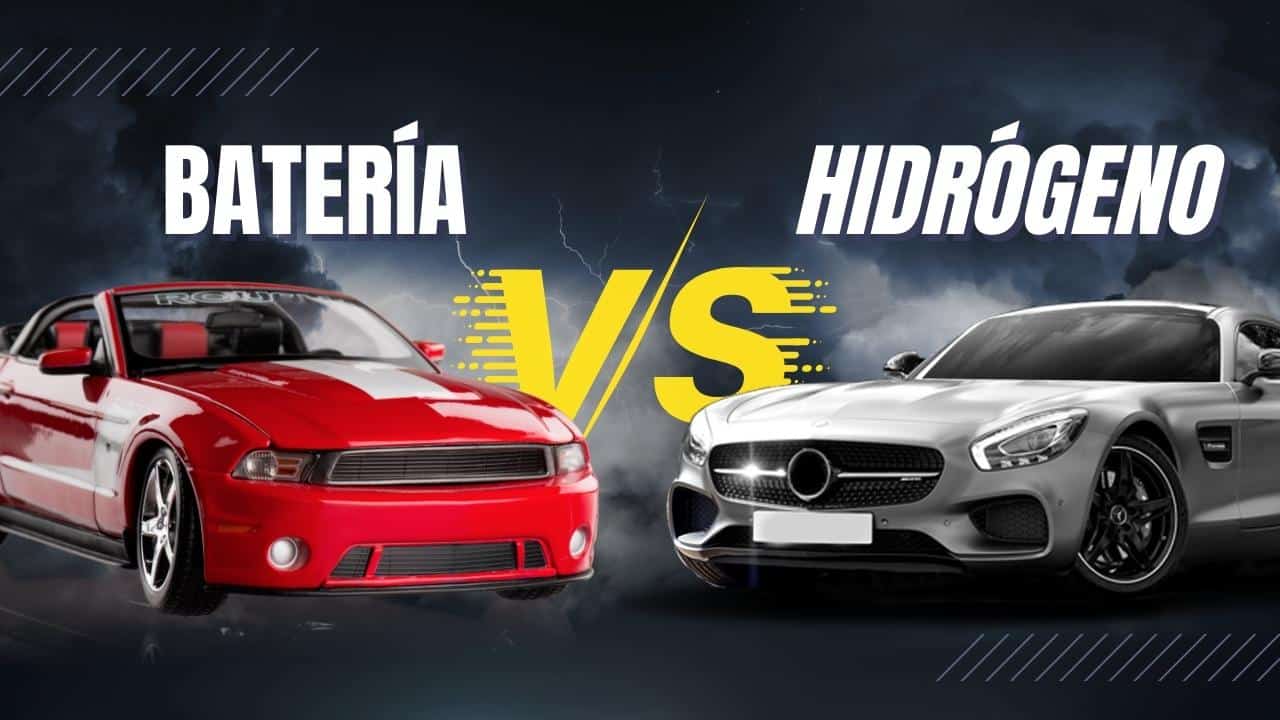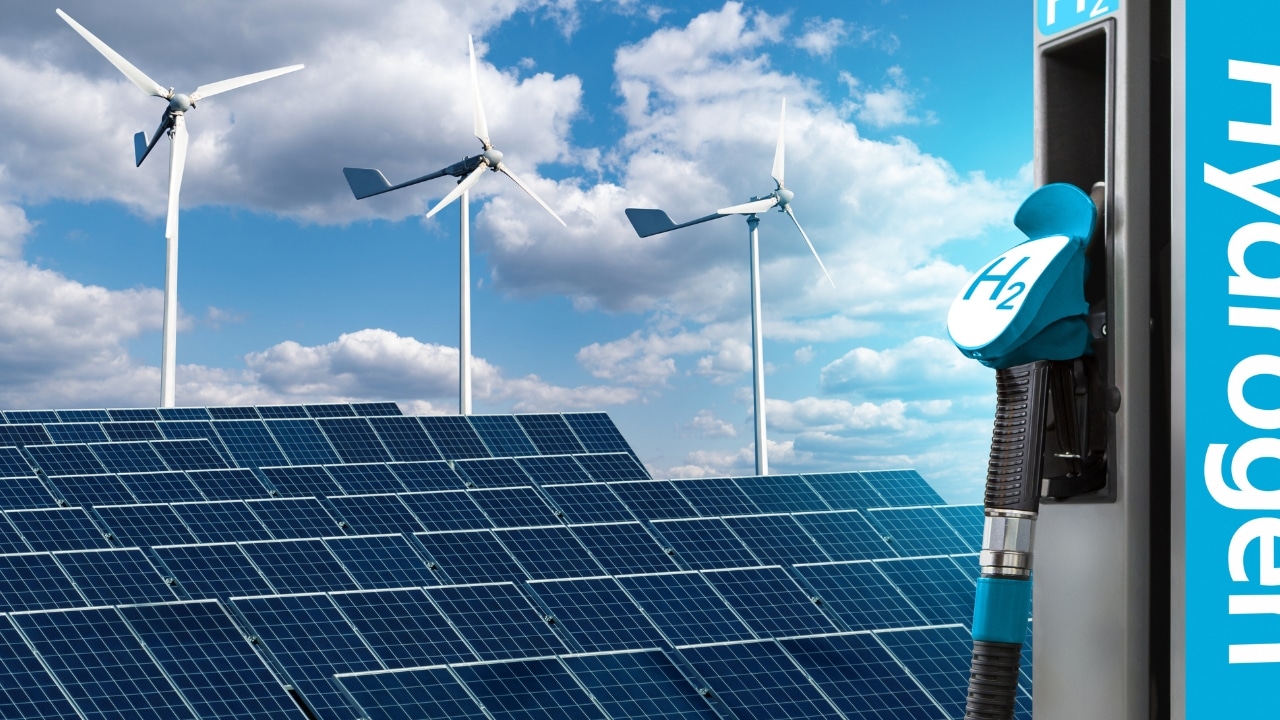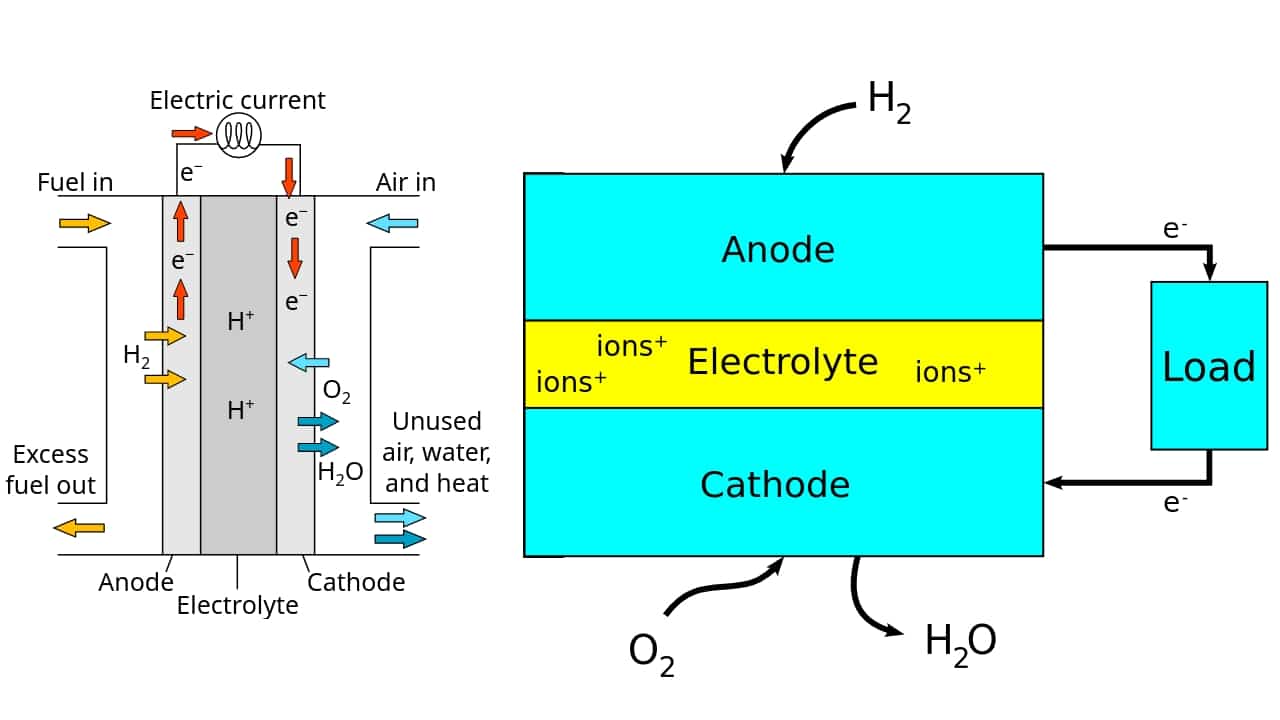
The hydrogen cars They have been relegated to second place with the prominence of hybrid, gas, and electric cars. However, hydrogen could be the fuel of the future, with advantages far superior to electric vehicles in terms of respect for the environment. And it is that electric cars have no emissions, but their batteries represent a serious environmental challenge due to the production of lithium and its recycling and waste management. However, hydrogen is the goose that lays the golden eggs, all are advantages...
What is hydrogen?

El hydrogen It is a chemical element of the periodic table that is characterized by being the simplest of all, with atomic number 1. It is a very light gas, it can be stored, and it does not generate polluting emissions by itself. With these characteristics it is a perfect candidate for use as fuel. In addition, it is very abundant on earth, and it can be easily produced through chemical processes. Renewable energy can even be used to produce this type of gas. Therefore, it can also be a way of obtaining renewable energy.
types of hydrogen
There is a color nomenclature that classifies hydrogen according to the way in which it has been obtained. It is important to know the existing types of hydrogen, As:
- Gray hydrogen: This type of hydrogen is obtained by reforming fossil fuels, such as natural gas. It is the cheapest hydrogen to produce at the moment, but CO2 is emitted into the atmosphere during production, so it is not a clean way to obtain it. It is the cheapest and the most produced today.
- blue hydrogen: It is another type of hydrogen obtained from fossil fuels, but this time with techniques that are capable of capturing and storing the CO2 emissions that are produced during the process so that they are not released into the atmosphere, so it has less environmental impact than grey. Of course, the emissions during its production are not completely eliminated, but they are reduced. The production price of this type of hydrogen is intermediate.
- Green hydrogen: He is the best of the three, and he is going to be talked about a lot. This renewable hydrogen is obtained through the electrolysis of water, so no pollution is generated during the process. In addition, to feed the electrolysis systems it is done with renewable energies such as wind or solar, so it is a sustainable and totally clean fuel. However, it is currently produced in smaller quantities than the previous two and is the most expensive.
The challenge is to replace all other hydrogens with green hydrogen, and in this way get the right fuel.
How is hydrogen obtained?

Hydrogen, as we have seen in the previous section, can be produced in various ways. But regardless of the energy involved in its production process, let's now look at the ways in which this gas can be obtained so abundant:
- molecular transformation: This technique is achieved from a series of chemical reactions to obtain hydrogen. Among the most widely used techniques is the use of natural gas obtained from oil fields. High-temperature steam is used to dissociate the carbon from the hydrogen of which natural gas is made. This is how dihydrogen is obtained on the one hand and carbon dioxide on the other.
- Gasification: is a method that achieves gasification with water vapor and pure oxygen from coal or biomass. In a reactor, coal or biomass is burned at very high temperatures. This combustion releases gases among which is the highly toxic carbon monoxide (CO) and dihydrogen on the other hand.
- electrolysis of water: It is the best method of the three in terms of sustainability and also in terms of abundance, since most of the earth is made up of water. Therefore, it could be obtained from the water of seas and oceans. For this, a water tank is used where electrodes are inserted. By applying a continuous electric current, the water molecules (H2O) are separated into oxygen (O2) and hydrogen (H2). When the power source for this electricity is renewable energy, such as solar or wind, this hydrogen is said to be green.
How does a hydrogen engine (fuel cell) work?

When we need convert hydrogen into energy, hydrogen gas can be stored in specific tanks from where it is channeled to a fuel cell. There it is recombined again with the oxygen in the air (as happens in an internal combustion engine when air enters the cylinder to cause combustion), which produces an energetic reaction and thus energy is obtained. In this way, no polluting gases of any kind will be emitted into the atmosphere, since the only waste generated by this type of engine is water. Recombining oxygen in the air with hydrogen creates H2O molecules in the process. A water that could be used for other purposes, including to regenerate hydrogen through electrolysis.
Thanks to this reaction between hydrogen and oxygen in your fuel cell, electricity is generated to move the electric motor and drive the vehicle. That is to say, hydrogen cars are essentially electric, although they do not get their energy from a lithium battery or another type that is polluting, nor from a hybrid engine that also has emissions. However, some vehicles of this type can have a battery to store the energy that is not consumed for use at another time. For example, when the power demand is high, all the energy that comes from the fuel cell is consumed, while if it is low, part can be diverted to the electric motors and part to be stored in the battery.
Many of these vehicles also have an regenerative brake, that is, to accumulate electrical energy from braking, thus helping to reduce hydrogen consumption and achieve better autonomy. And, as I mentioned earlier, the only waste that is generated is water, which you will expel through your exhaust pipe.
As for components of a hydrogen fuel cell vehicle, we have:
- power control unit: is a system that optimally controls the delivery of power in the fuel cell, as well as the charging of the batteries and the use of this electrical energy.
- Electric motor: There may be one or more. This is usually a permanent magnet synchronous motor that will convert electricity from the fuel cell or battery into power to propel the vehicle.
- fuel cell voltage converter: is the system capable of adapting the electricity generated by the hydrogen fuel cell to obtain the adequate voltage for the motors.
- fuel cell group: It is the true heart of the system, the component in which the chemical energy coming from the supply of hydrogen from the tanks and oxygen from the air is transformed into electrical energy.
- Battery: the battery is in charge of storing the energy generated by the fuel cell and that recovered from deceleration, as well as reinforcing the power of the fuel cell during acceleration in cases of high demand.
- high pressure tanks: hydrogen must be stored safely in high-pressure tanks. In addition, there will be overpressure valves, a warning in the event of a hydrogen leak and a three-layer structure: one made of fiberglass-reinforced polymer, an intermediate polymer and the third made of carbon-fiber-reinforced plastic. Everything to withstand very high pressures.
fuel cell operation

We have said that the fuel cell, or Hydrogen Fuel Cell Electric Vehicle (FCEV), is responsible for generating electrical energy from the reaction between hydrogen and oxygen from the air in the atmosphere. Well, in order to produce that electricity, electrochemical reactions are used. Fuel cells will use an anode and a cathode on each side of the electrolyte. For example, hydrogen is fed to the anode and a catalyst is used to generate positively charged ions that flow through the electrolyte to the cathode. Meanwhile, at the cathode, air is drawn into the system and combines with a catalyst, hydrogen ions, and electrons to produce heat and water as byproducts. This induces a current, generating electricity.
Experience driving a hydrogen vehicle

In practice, when driving a hydrogen vehicle the experience is almost identical to that of a battery electric vehicle. However, there are some slight differences, many of them will be refined over time, when technology advances, as they also did in electric cars, which have changed a lot from the first models presented to the current ones, despite the fact that they are relatively young. .
The challenge for automotive engineers is that hydrogen fuel cells work best with constant power. However, the power demands of a conventional vehicle when taking it on different roads, such as urban or highway, require changes in power delivery. Something that engineers work on to deliver the best possible results.
For example, the Toyota Mirai, has a 90 kW (120 horsepower) rated power. But that's not enough for high-speed highway acceleration, so Toyota (like other HFCV manufacturers) adds a low-capacity, high-voltage battery, much like those used in gasoline-electric hybrid vehicles, to help achieve That extra acceleration and power when demanded. Also, this does not mean that very powerful cars cannot be made with fuel cells, in fact, the Hyperion XP-1 supercar is a hydrogen car that can accelerate from 0-100 km/h in about 2.6 seconds, and reach top speeds of 356 km/h.
Advantages and disadvantages of hydrogen as a fuel

Finally, it is important to highlight the advantages and disadvantages that has to use hydrogen as fuel for vehicles:
Advantages
Among the latests Moravia's compositions and advantages From the use of hydrogen as fuel we have:
- Zero emissions: hydrogen vehicles only release water as a byproduct. Therefore, you contribute to the environment.
- Fast refueling: it will take only a few minutes to refuel, since you will only have to fill the hydrogen tanks again as you would with diesel or gasoline. Nothing to do with electric ones, which need to be plugged in for a long time to fully charge their battery. In addition, the average cost of an electric car is about €8.5 per 100 km, similar to what is spent on fuels such as diesel or gasoline. Instead, hydrogen could be cheaper.
- Meets EU targets: the objectives set by the EU to reduce emissions are more than met by hydrogen vehicles. In the EU proposal for 2030 it is intended to reduce emissions of polluting gases by 35%, and the hydrogen car emits 0.
- Minimum maintenance: These electric motors need minimal, simple and cheap maintenance, as well as being quite reliable. Therefore, you will not have to invest as much as in a combustion engine vehicle in this regard.
- Silent: They are just as quiet as electric ones, so they will not contribute to the noise pollution that exists in many cities.
- Greater autonomy: hydrogen cars have greater autonomy, something very important. While electric vehicles offer ranges of 300 km on average, hydrogen vehicles can achieve more than double that. They could even achieve autonomy of more than 2000 km in the near future.
- Zero Emissions: with the DGT Zero Emissions sticker you can park without paying a penny in cities, so you can have the same advantages as with electric cars when driving through urban areas.
- Withstand extreme temperatures: Unlike 100% electric cars, hydrogen cars can operate in more extreme temperatures. It will hardly be noticeable in the performance of the vehicle or in its autonomy, something that does happen with electric ones.
Disadvantages
Of course, hydrogen vehicles also have its disadvantages, like everything. The most prominent are:
- Price: As it is not such a mature technology, hydrogen vehicles have a higher price than conventional cars or electric cars. Therefore, it is a detail to consider. However, in the long run you can save on fuel and in the workshop, given how reliable they are. In addition, it must be said that these cars will tend to go down in price as time goes by, since the technology to create fuel cells and also for hydrogen tanks will mature more, which must be very safe to withstand high pressures and avoid leaks in accidents, which could lead to explosions.
- Few points to refuel: As it is currently a minority propulsion technology, as is the case with the electric car, there are not many points to refuel. This should gradually change. In Spain, for example, the sites can be counted on the fingers of one hand, since there are only about 6 points in Seville, Albacete, Puertollano, Zaragoza, Huesca and Barbastro. Other countries, such as Germany, already have more vehicles of this type, and have the goal of reaching up to 500 refueling points.
- Little variety of models: As it is not such a widespread technology, there are currently few brands and models to choose from, although this will also change as time goes by and manufacturers produce them on a larger scale. In addition, the lack of refueling points or hydrogen network is not helping to encourage the sale of this type of vehicle. However, you already have great hydrogen cars like the Toyota Mirai, Hyundai Nexo, Honda Fuel Cell Clarity, Hyperion XP-1, BMW i Hydrogen NEXT, etc.
- not compact: Given the complexity of the hydrogen tanks and the fuel cell, these cars tend to have larger dimensions, so if you are looking for small-sized utilities, you can forget about it. At least for the moment, until a higher degree of compaction is achieved. Even in some cases the trunk is not usually very spacious, since other mechanical components consume part of its space. In this sense they are similar to electric ones.
- Dangerous: Hydrogen is highly volatile and flammable. For this reason, hydrogen tanks must be very resistant and safe, withstanding impacts, avoiding leaks with additional security systems, and withstanding high pressures. All to keep drivers and other passengers safe. This leads to another derived problem, which is that the fuel cell and the tanks usually have a more limited useful life, given the safety regulations. Currently, it is estimated that the limit of a hydrogen tank is 15 years, at which time it would have to be replaced with a new one. As for the fuel cell, some manufacturers estimate that it could reduce its power by 15% after having done about 225.000 km of use, although little by little they are improving in this regard.